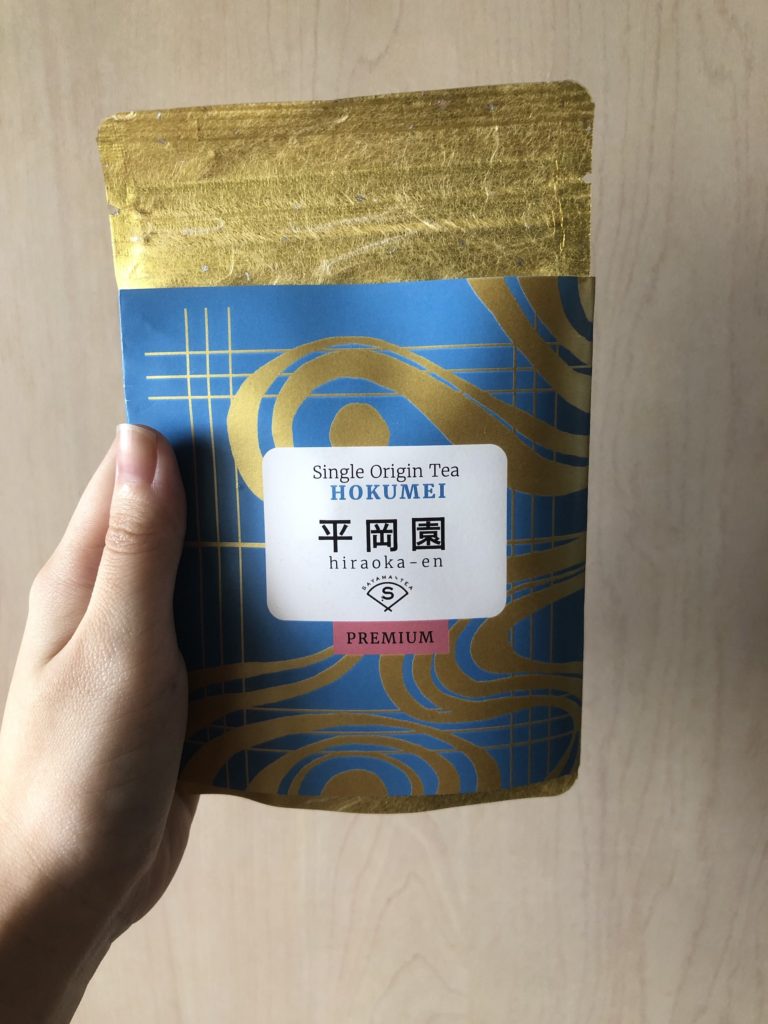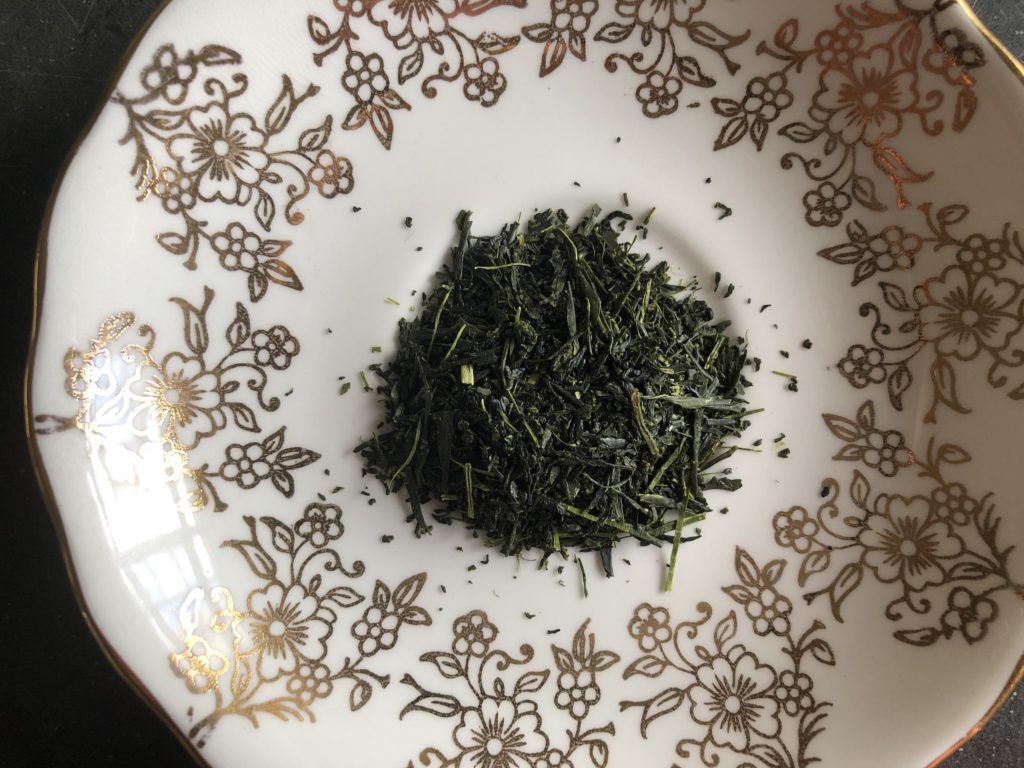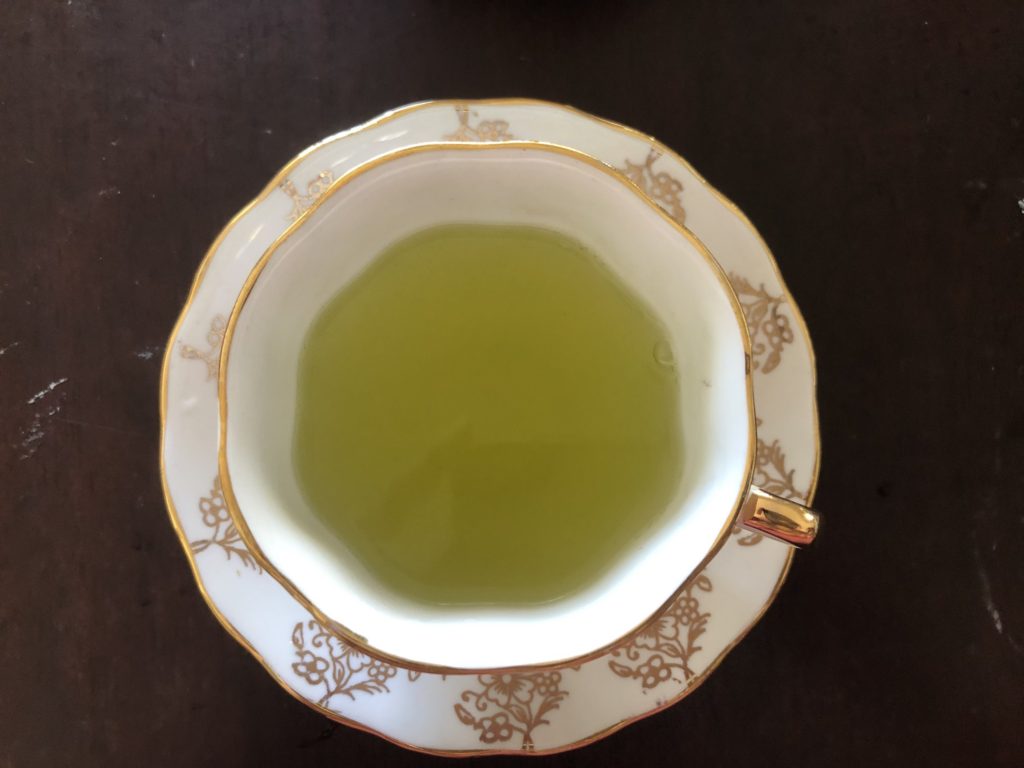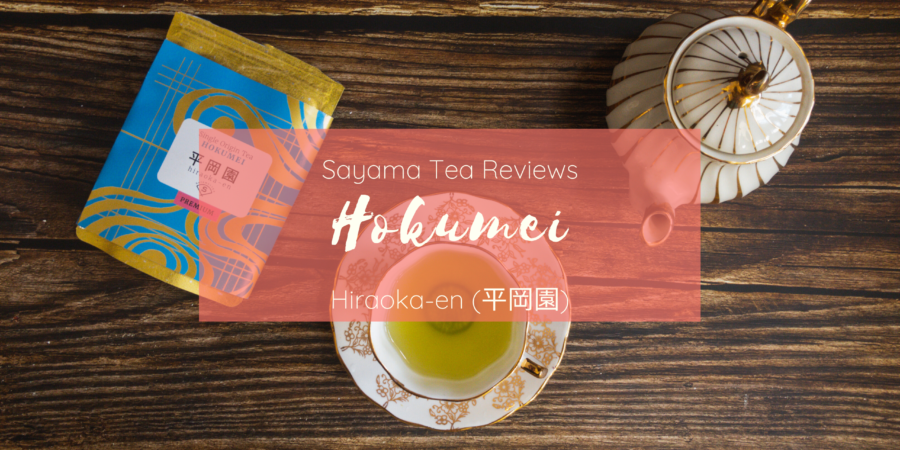We’re at tea three and about one third of the way done with this series! I’ve been enjoying all the sencha and am really looking forward to doing a mass-comparison session once I’m done with the individual reviews.

This third tea was chosen by the entirely scientific process of opening the tea cabinet and picking the first tea packet that fell on me (this is more about my lack of packing skills than the amount of tea I have).
First Impressions

This is the third sencha I’m trying and I’m getting the distinct impression that all sencha’s look the same. Where they differ, however, is the smell. The Hokumei is much more muted compared to the Fukumidori and Musashi-kaori, but I am getting some grassy notes.
Tasting Notes

First round: The tea liquor has a nice umami and grassy scent, albeit one that’s a bit softer than the other two. In terms of taste, the tea is definitely not sweet (especially compared to the Musashi-kaori), has some grassy notes, some umami notes, and a very slight bitter note.

Second round: The smell is even more muted than the first round, but the bitter and astringent notes are stronger. I’m getting a more distinct grassy note as well, and the bitter note actually works pretty well with it. This is going really well with the homemade shortbread (if you’re a tea drinker with a sensitive stomach, like me, then eating a snack with tea is a must to prevent gastric pains)


Third round: In light of the stronger bitter note in the second brew, I shortened the brewing time and lowered the temperature for round three. The bitterness was definitely less present because of that – it receded to somewhere around the back of the tongue. That said, the astringency is still pretty strong and I’m getting a biting sensation on my tongue. The tea is still very refreshing and went very well with the tonkotsu ramen that I was having for lunch (a totally scientific part of this tea tasting and not just because I got hungry).

Overall, I found this to be a brisk and refreshing tea that goes really well with rich foods (both sweet and savoury). I’m getting about four to five rounds of tea from this, and I think this would be a good option when I need something like matcha (to pair with foods, especially) but don’t actually have or want matcha.
Tea Description
From the tea cards:
“Hokume […] is a brand developed by Saitama Tea Research Institute in 1992. It has an aroma of young leaves. Its sweetness harmonizes with its astringency. The pale green color of the infused tea will give you a fresh impression.
“Hokumei goes well with sweets such as chocolate, cake, and Japanese-style confection. Sweetness and astringency will enhance each other.”
I have to admit, I didn’t get a very strong sweet note, but there is definitely a strong astringent note here!
About 平岡園 (Hiraoka-en)
From the tea card:
“Hiraoka-en has a plantation of about 3.3 hectares in Shimotomi, Tokorazawa City, Saitama. This area was developed by Kawagoe-han to make new vegetable fields in the beginning of the Edo period. Even now, you can find things reminiscent of Edo-period Japan: the farmland is divided into long rectangles, and the space has a thicket, cultivated land, residential site, and a grove. This area was registered as a historical heritage of Japanese agriculture in 2017.
“The next generation owner, Mr Tadahito Hiraoka, is passionate about making wakoucha (Japanese black tea). This year, he made a novel wakoucha that smells and tastes slightly like caramel, using leaves eaten by vermin.”
I don’t know about you, but I’m really interested in the wakoucha from Hiraoka-en! It’s something to look into when I’m done with all my sencha!

Oh this post reminds me that I have a 5g sample of Hokumei, but it’s from Sashima (Ibaraki prefecture) somewhere in my tea stash. About Hiraokaen’s black tea, I think it’s the first I see a description about leaves bitten by “vermin”. It doesn’t sound too.. nice. 😅 Usually a preferred term would be “bug-bitten” (along the lines of Dong Fang Meiren). Well, it does well in getting one’s curiosity piqued though. 😆
Ooh, I hope you get to try this soon – I’m curious about whether the astringency is from processing or a feature of the cultivar.
Yeah, I think it’s something like Dongfang Meiren – but with slightly more awkward English :p
Sure. Will update in probably another week or so. Still enjoying the freshness of my shincha collection. Hokumei is known to be a cultivar with some astringency though.
Can’t wait! And yes, I’m enjoying the freshness of shincha too!